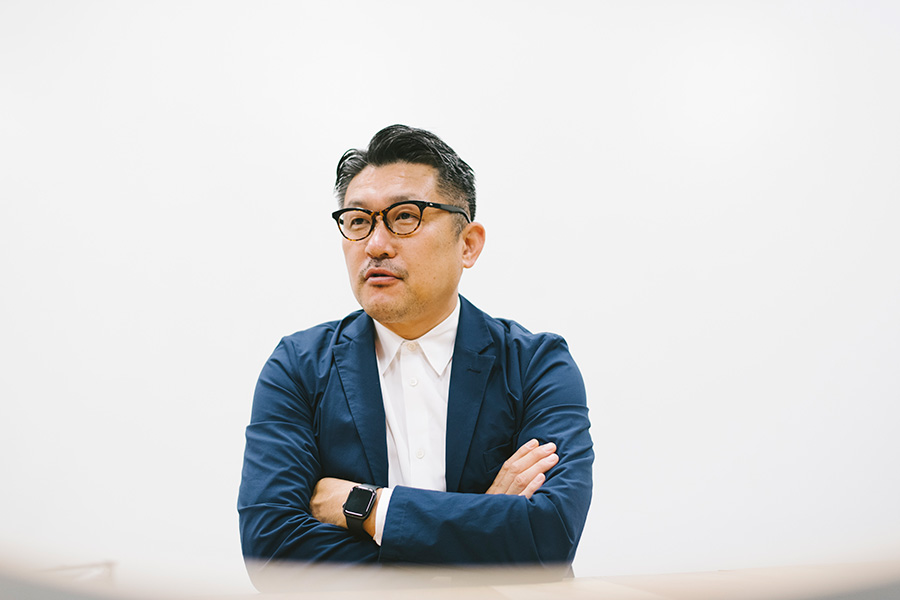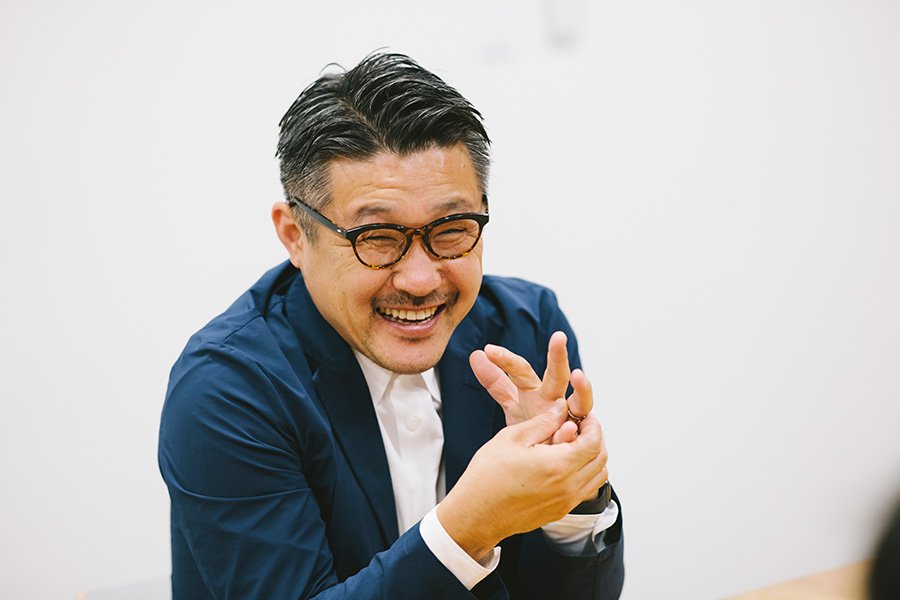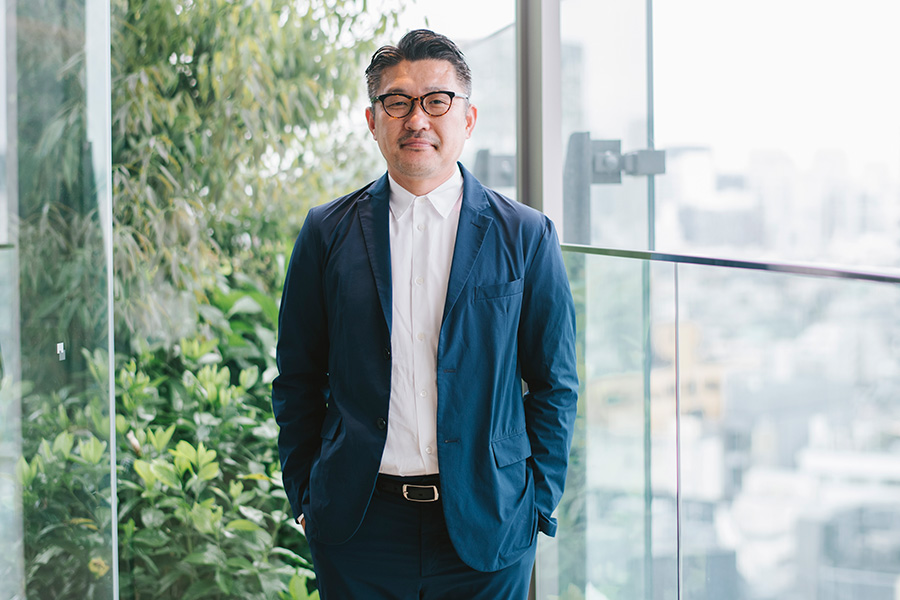産官学民のデータを掛け合わせ、社会課題のソリューション創出基盤を構築するため、専門家と会員企業によって組成される「渋谷データコンソーシアム」。この度、同組織のアドバイザーに就任した、渋谷未来デザインのFuture Designerでもある齋藤精一さん(パノラマティクス 主宰)を迎え、渋谷のデータ活用について、またコンソーシアムの活動を通じて実現したいビジョンについてお話を聞きました。
都市のデータ活用を、具体的なアクションのフェーズへ
——この度就任された渋谷データコンソーシアムのアドバイザーとして、これから同コンソーシアムに対してどんな期待を寄せていますか?
都市のデータ活用ということでいうと、今まではいわばPoCフェーズとして、データをどれだけ集められるかとか、それをどれだけオープン化できるかという視点が多かったと思いますが、これから取り組んでいかなければいけないのは、データをどのように活用して、どんなアクションにつなげていけるかというところだと思います。
渋谷データコンソーシアムの枠組みのなかで、行政と民間と、その中間にあるような渋谷未来デザイン(以下、FDS)とで連携してデータ活用を進めていくことで、全国的にみてもいい事例ができるんじゃないかと思っています。渋谷のように、これだけ解像度の高い街というのは珍しいし、しかも今、再開発などもあって街がどんどん変容しているなかで、どうデータをアクション的に活用できるかというところに非常に興味があります。

FDSは、とても多くのアクションを起こしていますよね。しっかりデータを吸い上げて、それをマイニングして、解析をして、行政と民間をつなぎながらアクションにしていくということは、僕にとって大きなモチベーションになっています。
バーチャル空間に街の“裏”は出来にくい
個人的に近ごろとても思うのは、「なんでもすべてDX化する必要はない」ということ。データの力を使って強くしていく部分、たとえば街の安全だとかという部分は推進していくべきだし、逆に、そうじゃないものは見切っていくというか、選択と集中が必要だという気がしています。
たとえば、人が集まるイベントやショッピングなどは、バーチャルだけでやるのではなく、リアルをベースにしてバーチャルも一緒にやるハイブリッドでいいと僕は思っていて。その理由のひとつは、街での体験というものの重要性にあります。
渋谷にあるお店で買い物をする人がいるとして、その人は「渋谷にあるお店の物を買いたい」のか、それとも「渋谷に来て物を買いたいのか」と考えると、後者の動機が強いと思うんです。渋谷という街が物を買わせている、とも言えるわけで、そういう街での体験に関わる部分はバーチャルではなくどんどんリアルに振っていったほうがいいと思っています。

——リアルでしか実現できないことというのもやはりありますよね。
もちろんすべてがリアルであるべきだとは思いません。コロナの蔓延状況なども含めて様々な状況に応じてリアルとバーチャルの割合を変えていくということが重要だと思います。
ただ、やはりリアルな街のたたずまいというのは、リアルでしか絶対に成り立たないのだと感じます。いくらデジタルツインでデジタルのビルが建っても、それはあくまでバーチャルであってリアルとは別のもの。街のたたずまいというのはやはりリアルとして残していくべきものだと思います。
——コロナ禍のはじめの頃は、いろんなものがどんどんデジタルに置き換わっていくことが、ある種の希望にもなっていたと思います。しかしある程度時間が経ってくると、逆に元々のリアルなものが尊くなってきているような実感もあります。
リアルな、しかも昔からある渋谷の街並みには、やはり“余白”があったんですよね。街に表と裏があって、裏の部分からもいろんなものが生まれてくるじゃないですか。白か黒かというとグレーな部分だからこそ面白い何かが生まれたり、化学反応が生まれたりする。しかしその点、デジタルって“余白”をつくるのが苦手なものだと思うんですよね。
——たしかにデジタルの街に“裏”はつくらないかもしれない…。
今はそうして、リアルからもバーチャルからも街の“余白”や“裏”がなくなって行く方向へ向かっていると思います。リアルな街でも“裏”だったところがどんどん“表”になっている。もちろんそれによって、たとえば防災面など、メリットがあることは確かですが、全部が全部そうあるべきではないんじゃないかと思っていて。だからやっぱり、デジタルとリアルそれぞれの得意分野を意識していく必要があるような気がしています。

解像度高く、課題解決のパズルを合わせていく
——渋谷という場所で、どんなデータを活用したら面白い取り組みになると思いますか?
デジタルの強いところのひとつは、たとえば今まで「区民」とか「都民」とか「国民」みたいな“群”としてしか捉えられなかったものを、もっと高い解像度で見られるというところ。それぞれの人がどういう特性を持っていて、どういう興味関心があって、どういう生活をしていて、どういう課題や問題を抱えているのか、というところまで分かるデータがとれる。だから、いろんな人の声を集めた解像度の高いまちづくりを、渋谷でデジタルを使って実現できると思っています。
最近よく考えているのは、データを活用して、なにかが余ってるところと足りないところを掛け合わせてあげるような、パズルみたいなもの。たとえば、僕の仕事の周りでよくあることなんですけど、「場所がないけどコンテンツを持ってる人」と、「場所を持ってるけどコンテンツがない人」を組み合わせてあげるとお互いWin-Winになれますよね。そういうことをドミノみたいに、この渋谷の中で、個人単位でも企業単位でも、どんどん起こしていけるといいなと思っています。データを使って、いままでは合わなかったパズルを合わせていくっていうことをやってみたいですね。
——渋谷にはたくさんの、多様な人がいて、つまり解像度が高い街だからこそ、パズルの合い方はたくさんあると。
そうです。昔、スーパーにある掲示板に、「売ります・買います・あげます」みたいなコーナーがあったじゃないですか。当時は普通に募集者の電話番号とかも載ってて、「不要な自転車を譲ります」みたいな。必要な人は電話をして、受け取りに行くっていうのがありましたよね。たとえばそれが自転車じゃなくて、もっと市場では価値がつかないようなものでも、たとえ1,000人に1人でも、価値を感じてくれる人がいるかもしれない。そういうところを、デジタルを使ってつなげていくようなことができるといいですよね。

——スーパーの掲示板では、その1,000人に1人の人が見つからないけど、デジタルだったら…。
分母がとても大きくなりますしね。
そういう発想で声と声をつないでイノベーションを起こしていけるようなことを渋谷データコンソーシアムでやっていけるといいなと思っています。
まちづくりは渋谷への恩返し
——最後に、Future DesignerとしてこれまでFDSで行なってきた取り組みで印象に残っているのはどんなことですか?
僕のなかで印象に残ってるのは、渋谷川沿い「渋谷リバーストリート」の公共空間利活用ですね。「WORK PARK PACK」と題して、様々なコンテンツを発信するコンテナを置いたプロジェクトでした。渋谷区と東京都、あとは一部、国交省とも行政調整をして、あのスペースが有効活用できるようになったというのが印象深いです。

FDSは、いろんな言語をしゃべれる組織だと思っています。行政とも民間とも話ができるし、もっと若い子たちとも、もっと先輩たちとも話ができるような。そういうところがFDSのいいところだと思っていますし、また、Future Designerの人たちも、活動するフィールドがそれぞれ違う、持っている興味関心や問題提起も違う人たちが集まっているところも、僕はすごく大きいなと思っています。
FDSのような行政の外郭団体というか、いわゆる出島みたいなところをほかの自治体も持つべきだと思います。民間企業だけだったら最初から諦めてしまうようなこと、たとえば「渋谷川なんて使えるわけないよね」っていうことも、FDSのような組織と一緒になって行政と話をすることで、実現の可能性が見えてくる。そのプロジェクトが現実的になってきて、一度実施できてしまうと、その後は同じようなことがやりやすくなるんですよね。
そうやって今までの常識を疑って、ひっくり返そうとすることがFuture Designerの役割だと思いますし、はたから見ると、めちゃめちゃめんどくさい人たちでもあると思います(笑)。でも僕も歳を取ってきて、渋谷の街には若いときにいろいろお世話になったし、無茶もさせていただいたし、何かで街にお返ししたいという気持ちが出てきました。これからももっといろいろと関わらせていただいて、もっと貢献させてほしいですね。




